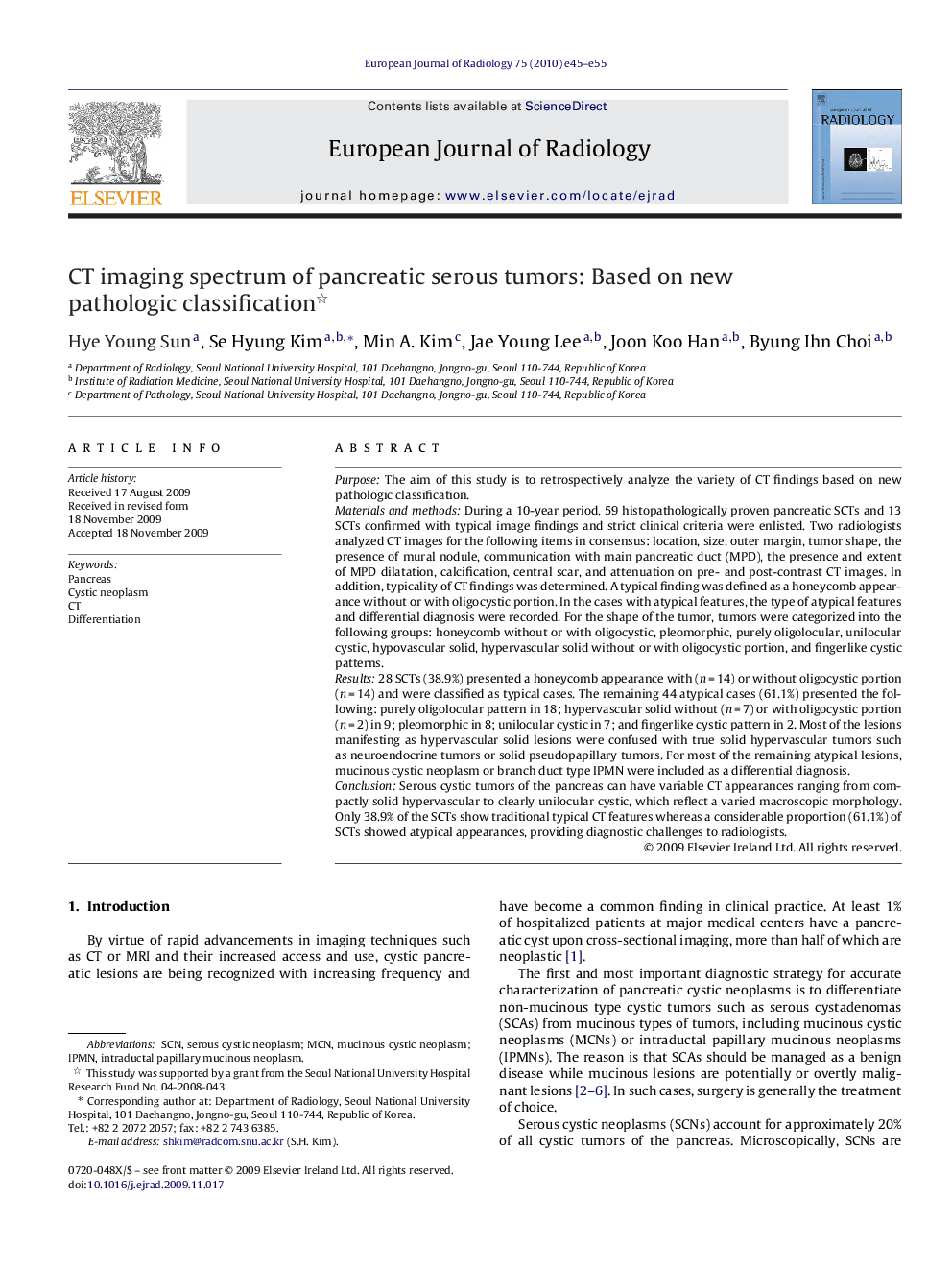| Article ID | Journal | Published Year | Pages | File Type |
|---|---|---|---|---|
| 4226982 | European Journal of Radiology | 2010 | 11 Pages |
PurposeThe aim of this study is to retrospectively analyze the variety of CT findings based on new pathologic classification.Materials and methodsDuring a 10-year period, 59 histopathologically proven pancreatic SCTs and 13 SCTs confirmed with typical image findings and strict clinical criteria were enlisted. Two radiologists analyzed CT images for the following items in consensus: location, size, outer margin, tumor shape, the presence of mural nodule, communication with main pancreatic duct (MPD), the presence and extent of MPD dilatation, calcification, central scar, and attenuation on pre- and post-contrast CT images. In addition, typicality of CT findings was determined. A typical finding was defined as a honeycomb appearance without or with oligocystic portion. In the cases with atypical features, the type of atypical features and differential diagnosis were recorded. For the shape of the tumor, tumors were categorized into the following groups: honeycomb without or with oligocystic, pleomorphic, purely oligolocular, unilocular cystic, hypovascular solid, hypervascular solid without or with oligocystic portion, and fingerlike cystic patterns.Results28 SCTs (38.9%) presented a honeycomb appearance with (n = 14) or without oligocystic portion (n = 14) and were classified as typical cases. The remaining 44 atypical cases (61.1%) presented the following: purely oligolocular pattern in 18; hypervascular solid without (n = 7) or with oligocystic portion (n = 2) in 9; pleomorphic in 8; unilocular cystic in 7; and fingerlike cystic pattern in 2. Most of the lesions manifesting as hypervascular solid lesions were confused with true solid hypervascular tumors such as neuroendocrine tumors or solid pseudopapillary tumors. For most of the remaining atypical lesions, mucinous cystic neoplasm or branch duct type IPMN were included as a differential diagnosis.ConclusionSerous cystic tumors of the pancreas can have variable CT appearances ranging from compactly solid hypervascular to clearly unilocular cystic, which reflect a varied macroscopic morphology. Only 38.9% of the SCTs show traditional typical CT features whereas a considerable proportion (61.1%) of SCTs showed atypical appearances, providing diagnostic challenges to radiologists.
